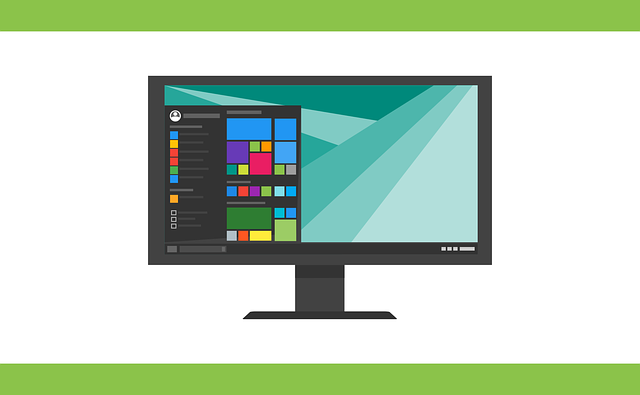This post shows students and new users the steps to get back to Windows 10 after upgrading to Windows 11. When you do a place upgrade to Windows 11, you can go back to Windows 10 within 10 days after upgrading without losing your records.
Some of the reasons why users may want to roll back the Windows 11 update are incompatible system drivers, performance issues, and lack of user support. Whatever your reasons for rolling back Windows 11, this option is only available for 10 days after updating your computer.
After those 10 days, Windows 11 will remove all previous installation files to make room for Windows 11 updates and other updates. You won’t be able to restore Windows 10 after the 10 days have passed.
Although you may be able to restore Windows 10 after the update, you may need to reinstall some apps and settings because during the update process, Windows may have changed them a bit, which may require users to redo some of the changes.
How to go back to Windows 10 after upgrading to Windows 11
As mentioned above, one has 10 days to go back to Windows 10 after upgrading to Windows 11. Here’s how to do it.
Windows 11 has a centralized location for most of its settings. From system settings to creating new users and updating Windows, everything can be done from your System settings crystal.
To access the System Settings, you can use the Windows key + i shortcut or click Start ==> Settings as shown in the following picture:
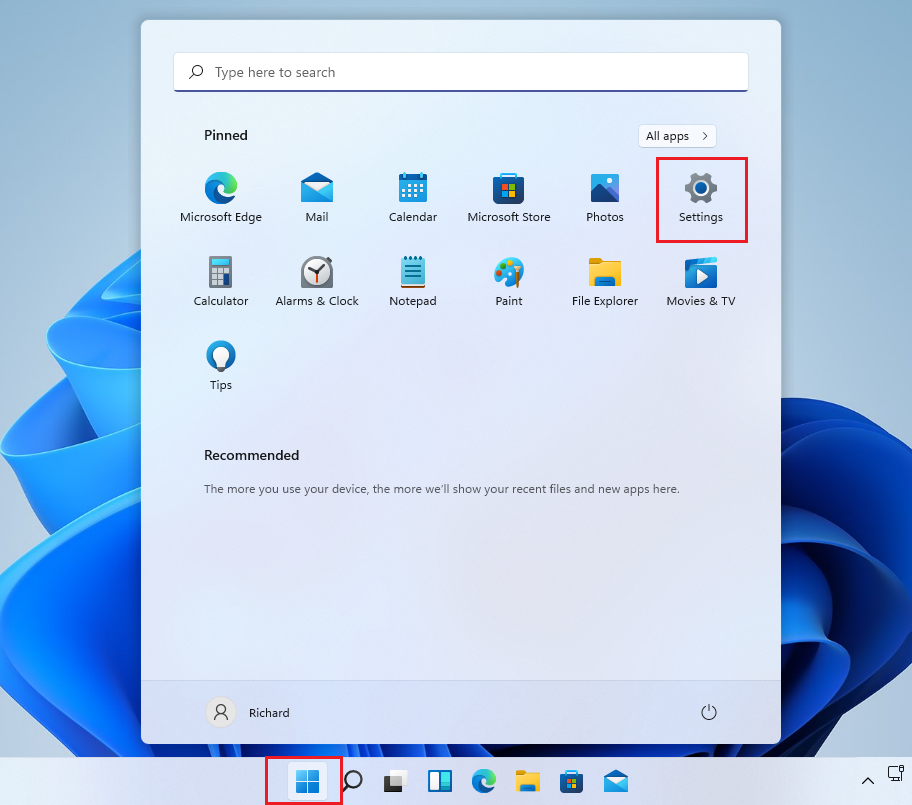
Alternatively, you can use the search box on the taskbar and find Settings. Then select to open it.
The Windows settings panel should look similar to the image below. In Windows settings, click System, Select the Recovery tile on the right panel of the screen shown in the image below.
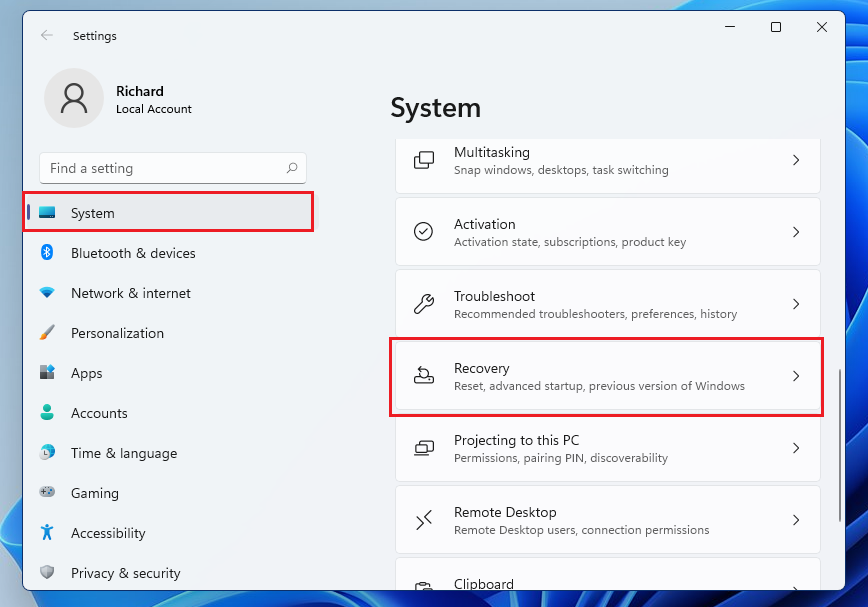
About him System recovery configuration panel, below the Recovery options, click on the Came back button.
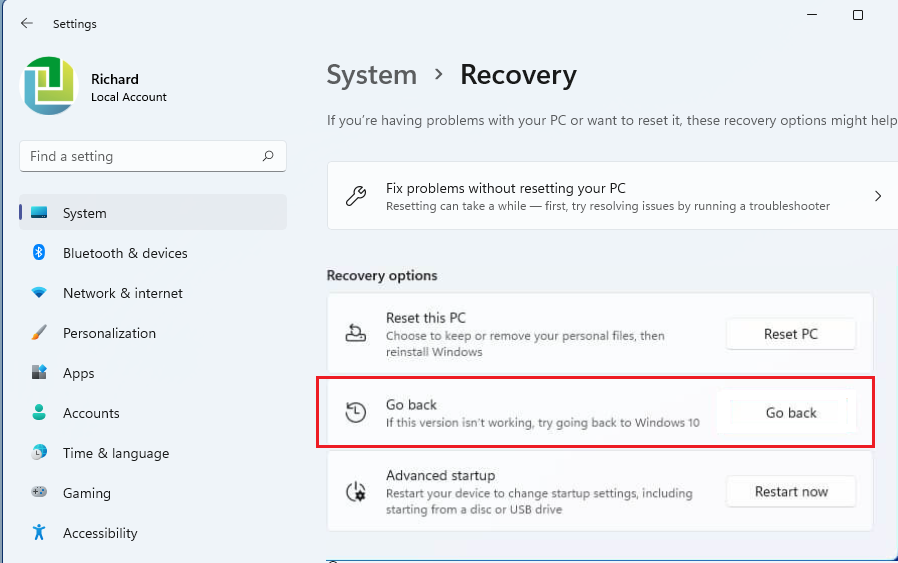
When you do that, Windows will start the restore process and ask you to choose the reasons you want to go back. The most common reason will be that the Previous versions seemed more reliable. Click next after your selection.
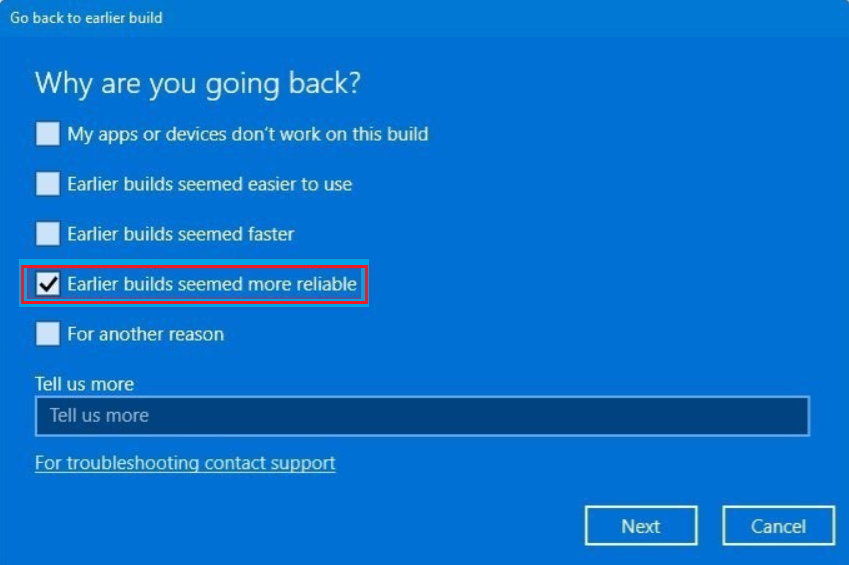
On the next page, when prompted to check for updates, choose No thanks.
Then click Next after you have read some changes that you will need to make after going back to Windows 10.
- You will have to reinstall some applications and programs.
- You will lose any changes made to the settings after installing the latest build

Finally, click on the Go back to Windows 10 to roll back the Windows 11 update.
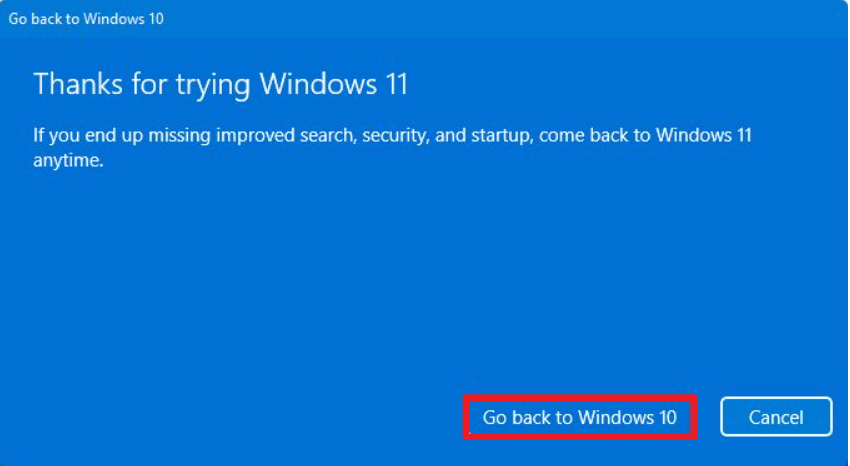
You should do that!
After that, Windows will go back to Windows 10 without losing your files and many of your settings. You will still be able to update at any time in the future when you decide.
Conclusion:
In this tutorial we have seen how to go back to Windows 10 after upgrading to Windows 11. If you find any errors above or have something to add, use the comment form below.
